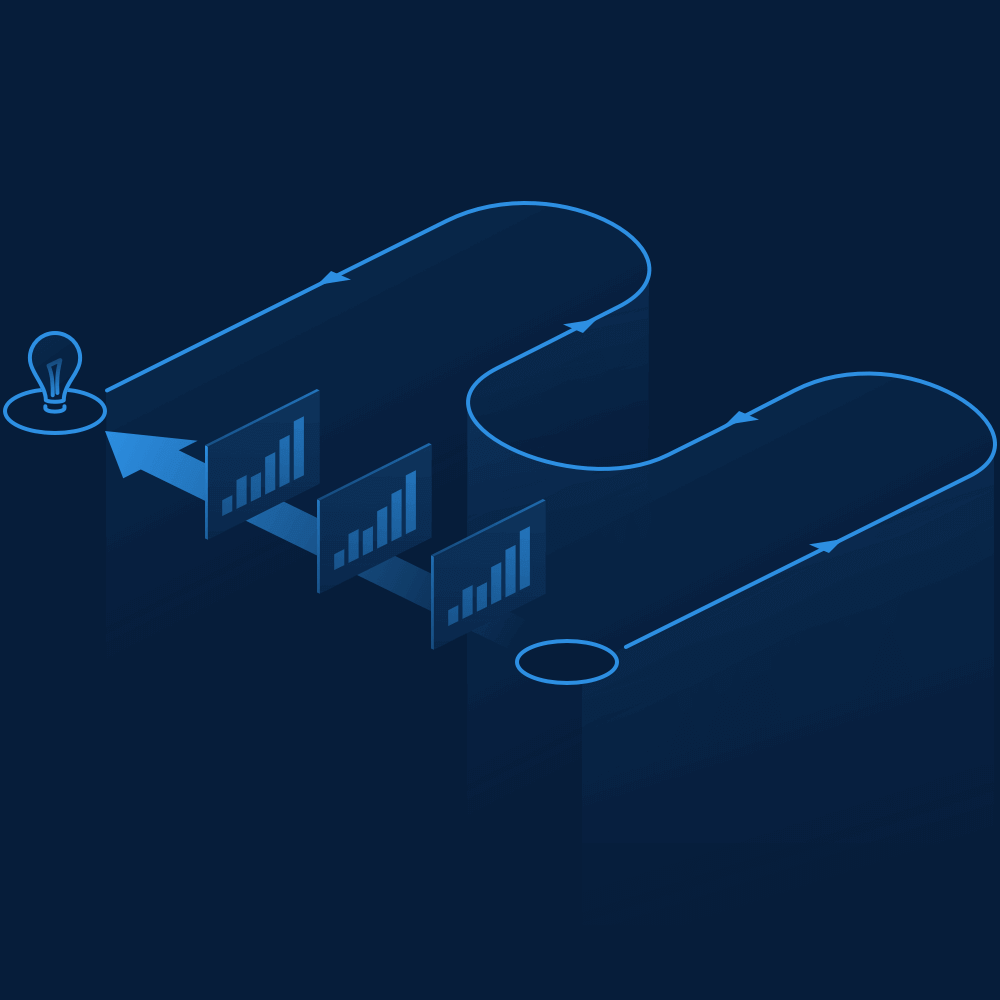- Home
- CDC ASIA PACIFIC CONSULTANCY
HIGH IMPACT PRODUCTIVITY SYSTEM
Productivity plays an important role in the generation of Malaysia’s wealth by ensuring effective and efficient use of resources. In the light of globalization, limited resources and increasing competition from emerging economies, it is important that Malaysia sustains its economic growth through productivity gains.
The same applies to organisations. Successful productivity management is key to their survival in today’s highly competitive environment. An organisation’s productivity can be effectively raised only if it is managed in a holistic manner.
Productivity management is a journey of continuous improvements involving employees at all levels. Benefits This program aims to help you manage your organisation’s productivity systematically through an Integrated Management of Productivity Activities (IMPACT) framework.
The IMPACT framework includes the key productivity levers to address when you embark on productivity improvement initiatives.
Productivity Concept
✅ What is Productivity
✅ Productivity Indicators
✅ Output
✅ Input (Labour and Capital)
✅ Labour Productivity
Concept of Value Added
✅ Subtraction Method
✅ Addition Method
✅ Creation of Value Added and Distribution of Value Added


✅ Establishment of Productivity Management Function
✅ Step 1 Establish A Productivity Management Structure
✅ Step 2 Set Overall Productivity Goals
✅ Step 3 Garner Participation and Commitment
✅ Baseline Understanding For any productivity intervention to be effective, we should have a thorough understanding of your organisation’s current situation. This can be done through a productivity diagnosis to assess your organisation’s “state of health”.
✅ A qualitative assessment of your organisation’s performance in relation to the productivity levers.
✅Current Performance
Level (CPL)
✅ Required Performance Level (RPL)
✅ Gap measurement (CPL vs RPL)
✅ Identify organization’s strength and weakness
✅ Identify organization’s opportunities and threats
✅ Identify the gap and areas for improvement
A quantitative assessment of your organisation’s performance based on certain key indicators that are linked to the various productivity levers. There are various common indicators used to gauge an organisation’s productivity performance.
✅ These indicators may provide a good analysis of your organisation’s overall performance and able to measure the performance of the operational units and functions.
✅ Financial Indicators
✅ Financial ratio
✅ Understanding finance with financial statements
✅ An overview of financial reporting
✅ Accounting concepts and principles
✅ Structure and content of financial statements
✅ The Annual Report
✅ Business financial performance
✅ Measurement of business profitability
✅ Gross profit
✅ Operating profit
✅ Net profit before tax
✅ Quality of performance – making judgment
✅ ROE – definition and impact
✅ ROA – definition and impact
✅ Business financial position – risk management
✅ Working capital and liquidity
✅ Insolvency risk and gearing
✅ Asset quality and management
✅ Business Valuation and financial market indicators
✅ Price earnings relationship – the PE multiple
✅ Dividend yields and payouts
✅ Net assets
✅ Conclusion and review
✅ Productivity Diagnostic Tool
✅ Labour productivity
✅ Sales per employee
✅ Value added-to-sales ratio
✅ Capital productivity
✅ Sales per ringgit of capital
✅ Capital intensity
✅ Labour cost competitiveness
✅ Labour cost per employee
✅ Profit-to-value added ratio
✅ Profit margin


Balance Score Card
The balanced scorecard allows managers to look at the business from four important perspectives.
✅ Financial goals—“What financial goals do we have that will impact our organization?”
✅ Customer goals—“What things are important to our customers, which will in turn impact our financial standing?”
✅ Process goals—“What do we need to do well internally, in order to meet our customer goals, that will impact our financial standing?”
✅ People (or learning and growth) goals—“What skills, culture, and capabilities do we need to have in our organization in order to execute on the process that would make our customers happy and ultimately impact our financial standing?”
Key Performance Indicator
✅ Principles and Practices of KPI
✅ Foundation Stones for Implementing Key Performance Indicators
✅ Developing and Using KPIs – A 12-Step Model
✅ KPI Team Resource Kit
✅ Templates for Reporting Performance Measures
Identify the organization’s strengths and weaknesses, and recommend areas for
improvement.
✅ Productivity Output
✅ Increase Sales
✅ Increase output per unit of production
✅ Productivity Input
✅ Optimize use of Labour
✅ Optimize use of Capital Organization
Strategy Planning Process Analysis
✅ What is strategy? Reason to be selected by society.
✅ Strategy planning process
✅ Mission Vision Value
✅ Brand
✅ Environment Analysis
✅ Corporate Strategy Analysis
✅ Functional Strategy Analysis


✅ Overview of the Lean Manufacturing System
✅ Introduction to Fundamental of Lean Manufacturing System
✅ Initiating the Lean Processes
✅ Creating Process Stability
✅ Standardizing Works
✅ Implementing the Pull Prediction System
✅ Preventing Failure with Jidoka
✅ Engaging People
✅ Planning Lean
✅ Work Sampling
✅ Work sampling is a method to survey the ratio of “performance” (operation) and “motion” (non- operation) by observing what is being done at the moment
✅ PQ (Product Quantity)Analysis – Kaizen Target
✅ Process analysis and time study
✅ To improve the operation of bottleneck processes, and non value added process in order to increase the production volume and shorten the production period.
✅ Line Balance Analysis
✅ To improve operation efficiency by eliminating operator waiting through balancing the time of each operation as much as possible in the line continuous operation
✅ Workflow analysis
✅To check whether materials/products are effectively flowing.
✅ Mobility Analysis
✅ The mobility index is a statistical expression of the ease of handling.
✅ Eight (8) Wastes
✅ MUDA(Waste) is defined as “any activities that consumes resources without creating value for the customer.
✅ IMPACT Implementation Enabled by Industry 4.0
✅ Process
✅ Customer
✅ Control and
✅ Human Factors
After the diagnosis is completed, you will develop a productivity road map or action plan based on the findings obtained.
The road map helps to direct specific activities towards your productivity goals in a coordinated and systematic manner.
✅ Components of Productivity Road Map
✅ Template for Productivity Road Map


Importance of Productivity Measures
Productivity improvement initiatives must be complemented by a sound measurement system, which forms an integral part of an organisation’s management information system.
Productivity measures can be used to:
✅ Evaluate the effectiveness of action plans
✅ Monitor performance
✅ Set targets and formulate strategies
✅ Account to various stakeholders – customers, investors, employees, suppliers and funding agencies
✅ Link effort and reward for employees
✅ Productivity Measurement
Since productivity is the relationship between output and the input used to produce that output, there are various ratios you can use to measure the performance of different operational units within your organisation. By adopting an integrated approach to productivity measurement, you can learn how each of your departments affects your organisation’s overall performance.
✅ Key Management Indicator
✅ Activity Indicator Operational Indicator
Productivity measurement tells an organisation how it is performing and why, and what it should do in view of its performance. The next step is to use these measures to manage productivity performance.
Performance management covers two main areas:
(a) activities to monitor performance;
(b) activities to reinforce performance and motivate employees.


In this module, you will have the opportunity to reflect on the application of your learning in the workplace. Further more it is most important that you allocate sufficient time to complete any outstanding actions from your activities.
As defined in the earlier modules Rapid Breakthrough Improvement (RBI) cycle, going to Gemba and helping the team to problem solve and get the result is crucial at this stage.
✅ Principles of Business Results
✅ Create value based on organization performance
✅ Measure customer needs and wants
✅ Guidelines for measurement
✅ Measurement System
✅ Align with customer needs
✅ Measure the whole system
✅ Measure flow and waste
✅ Voice of the customer
✅ Key Lean Indicators Related Measures
✅ Yield
✅ Quality matters
✅ Delivery
✅ Cost
✅ Financial Impact
✅ Competitive Impact

